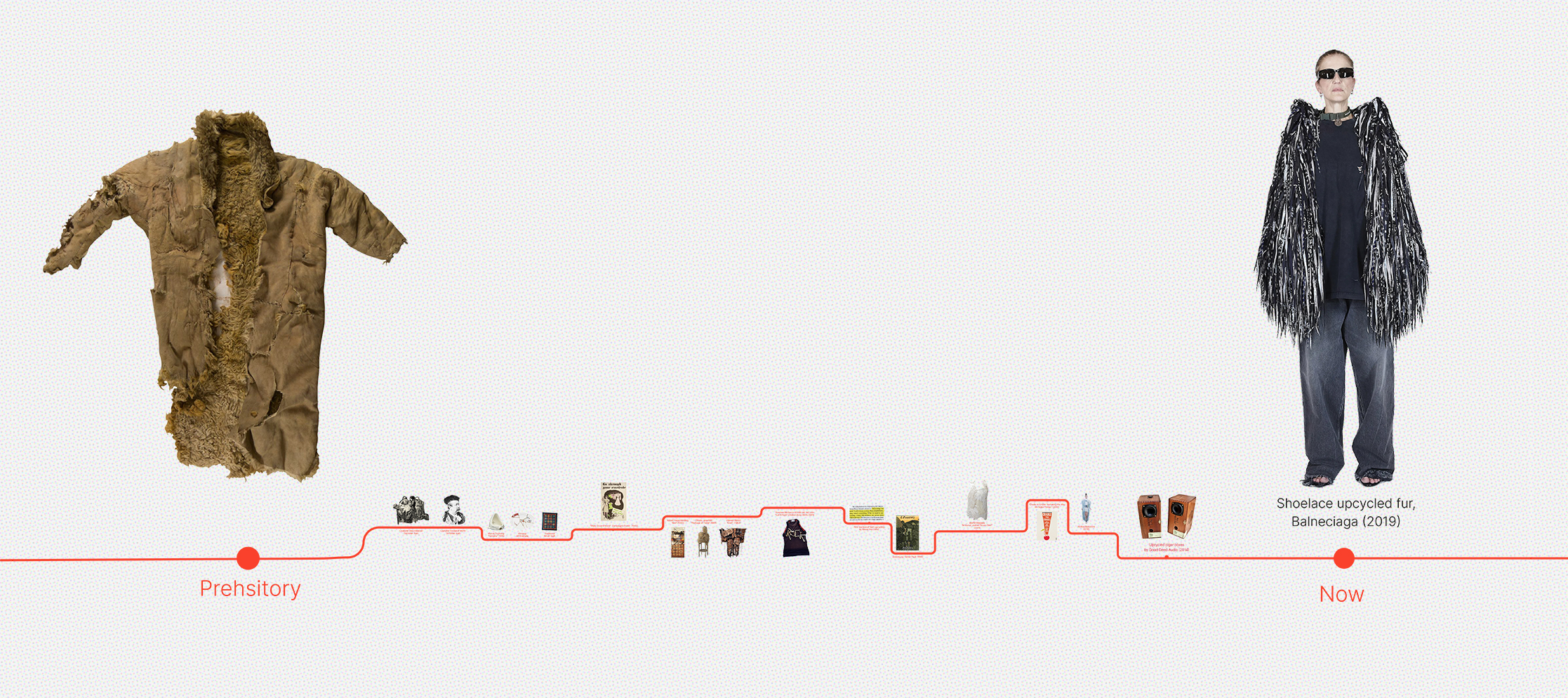
The History Of Upcycling
Upcycling is more than a more sustainable way to create clothing, it promotes a new way of thinking. So, let’s look at the history of upcycling and key aspects of the movement that has defined upcycling as we know it today.
UPCYCLING IN THE 19TH CENTURY
Technically, the history of upcycling can be traced back to early humans, where reusing and “upcycling” materials and products were simply a part of everyday life. However, upcycling in fashion is not just something that humans have used for practical reasons; there is evidence that it has also existed in luxury. In fact, the habit of nineteenth-century haute couture clients was to transform and reuse the materials of their expensive garments to make them last for decades. During the reign of Queen Victoria, Princess Alexandra of Denmark, the queen's daughter-in-law, asked English couturier Elise Kreutzer to continuously repurpose her own gowns - including her wedding dress. The father of modern couture, Frederick Worth is another notable fashion icon that is known to have reimagined his old creations into new garments.
UPCYCLING IN THE 1900S
In 1915, Marcel Duchamp coined the term ready-made art or found art, where he selected mass-produced, commercially available, often utilitarian objects, redesignating them as art and giving them titles “Found Objects.” While this popularised the concept of seeing the beauty in discarded objects, it’s certainly not the first example of upcycling within art throughout history. Upcycling can also be seen in Japanese culture, where they practise Kintsugi, the art of repairing broken pottery by mending the areas of breakage with lacquer dusted or mixed with powdered gold. As well as in Amish culture, where a traditional quilt is created through the reapplication of salvaged fabric.
UPCYCLING IN THE 1940S
During WWII, on June 1, 1941, the British announced a clothing rationing which led to the launch of an upcycle campaign, "Make Do and Mend'' in 1943 by the Ministry of Information. The campaign encouraged citizens to upcycle and recycle clothing in an attempt to make their clothing supplies last longer. Women in the home were also given advice on how to wash clothes so they lasted longer, how to prevent moth damage, as well as how best to store shoes.
UPCYCLING IN THE 1950S + 1960S
Inspired by Duchamp’s found art movement in the early 1900s, in the 1950’s we saw the emergence of the junk art movement. The name junk art was coined by British art critic Lawrence Alloway, it was to describe art made from scrap metal, broken machinery, timber, or other materials that were considered to be ‘waste. Pioneers of the junk art movement are artists such as Robert Rauschenberg, Christo Javacheff, Ettienne Martinand with Antoni Tapies, artists from Spain and Italy also involved in the movement and technique.
UPCYCLING IN THE 1970S + 1980S
Upcycling or ‘customising’ became popular again in the late 1980s and early 1990s when the UK faced a major recession. Teenagers, who were passionate about fashion, expressed their identity by upcycling, deconstructing and customising clothes that they had gotten second-hand.
UPCYCLING IN THE 1990’S
Following the 80’s concept of Deconstruction, fashion powerhouse Maison Martin Margiela launched a collection in 2001 containing upcycled garments, most notably the iconic artisanal leather "gloves" gilet. Margiela is known for challenging and resetting the rules of fashion, creating a new era of style that constructed garments by deconstructing them.
The first mention of the term upcycling is also found in a 1994 article in the architecture and antiques magazine Salvo. An interview with mechanical engineer Reiner Pilz states: "I call recycling down-cycling. What we need is up-cycling, thanks to which old products are given a higher, not a lower, value.” The word upcycling was then popularised by entrepreneur Gunter Pauli in 1998. Pauli, who is often referred to as “The Steve Jobs of Sustainability,” used the term in his book Upsizing: The Road to Zero Emissions- More Jobs, More Income and No Pollution.
UPCYCLING IN THE 2000’S
In the noughties, we saw the Upcycling concept incorporated by William McDonough and Michael Braungart in their book “Cradle to Cradle: Remaking the Way We Make Things.” They state that the goal of upcycling is to prevent wasting potentially useful materials by making use of existing ones and reducing the consumption of new raw materials when creating new products.
In 2004, we first saw the word “Trashion” coined in New Zealand. Trashion is a subgenre of junk art, which like upcycling, is the idea of using objects, or in this case, trash that has already had some other defined purpose and turning it into art. Trashion is deep-rooted in the environmental movement as it aims to call attention to and reduce the polluting outcome of waste.
UPCYCLING TODAY
While upcycling has always remained common practice in developing nations, in recent years, with the growing concerns surrounding climate change and the implications waste has on our natural environment, upcycling has become a way to participate in the world of fashion but through a more sustainable lens. In fact, upcycling can double the life expectancy of a garment while avoiding any further environmental impact making it the most sustainable thing you can do in the industry today.
Along with being a more ethical and sustainable way to create fashion, upcycling has become a way for fashion designers to rebel against the nature of ‘fashion trends’ and a way to create stylish limited-edition collections .
2nd January 2023